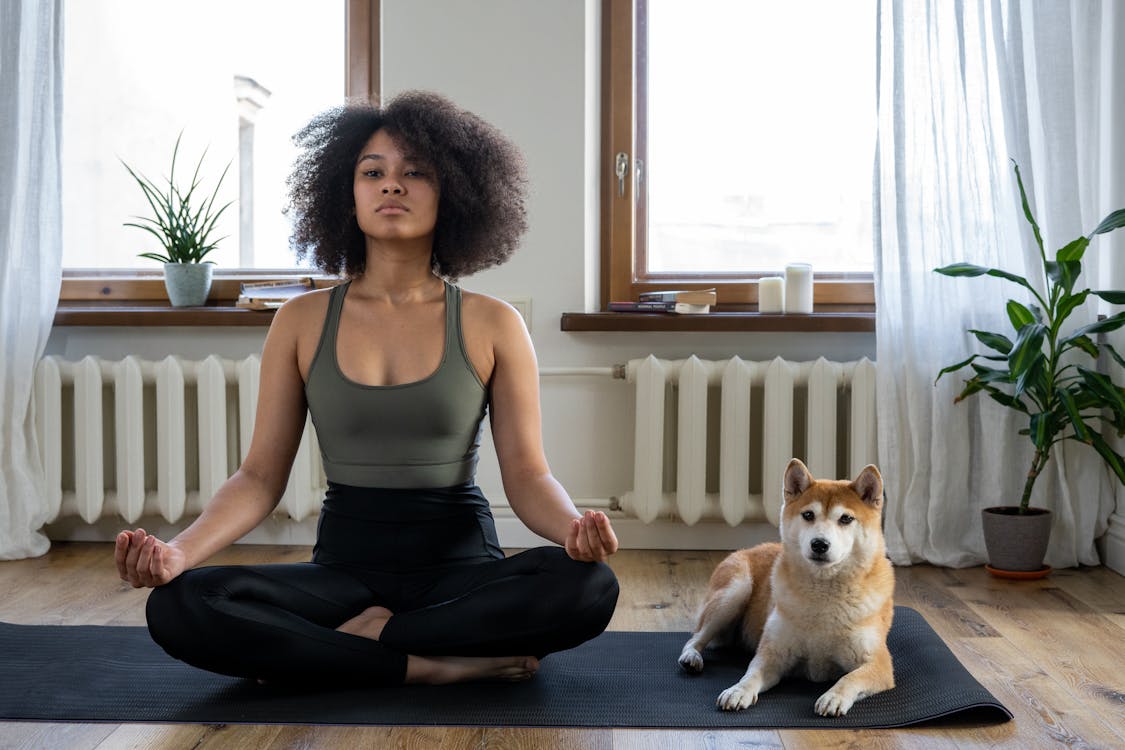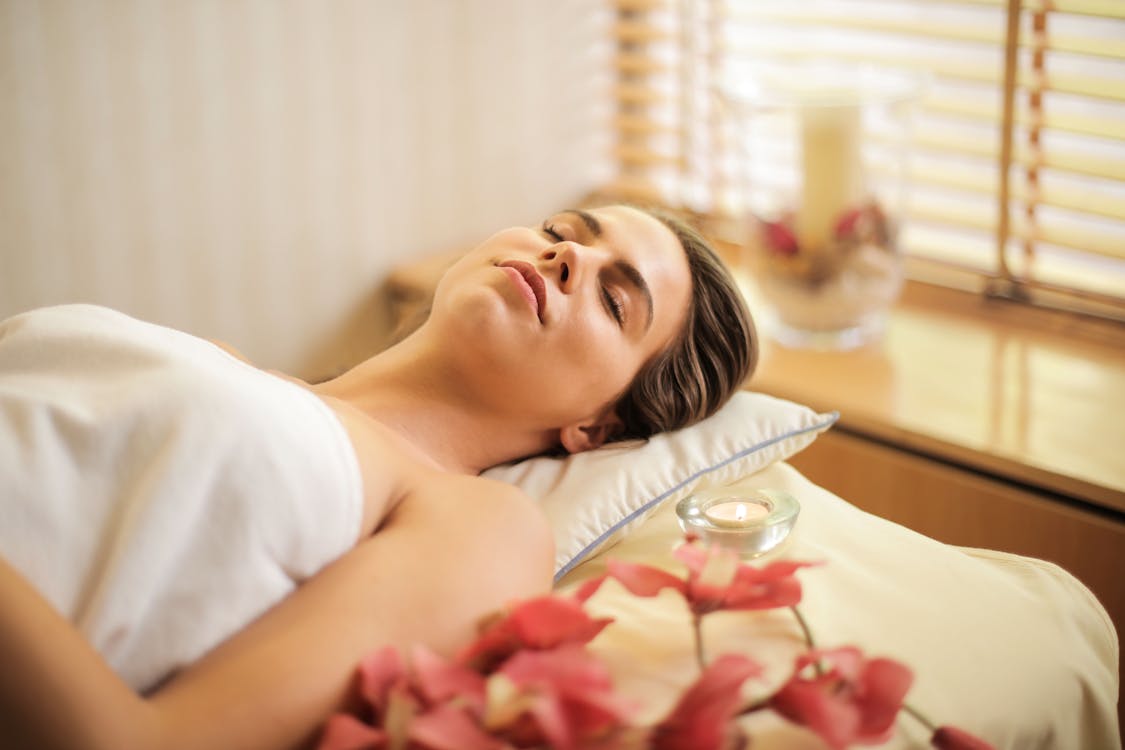In our increasingly sedentary world, that feeling of stiffness in your neck after a long day at the computer, the tight hips that groan when you stand up, or the hamstrings that protest with every bend are all too common. We often dream of being more flexible – able to touch our toes with ease, move freely without discomfort, and simply feel more limber in our own skin. But the world of flexibility training can seem daunting, especially if you're a beginner. The good news? Improving your flexibility doesn't require contortionist-level skills or hours in a specialized studio. A consistent, gentle, and intelligently designed routine, like the 15-minute full-body beginner flexibility sequence highlighted in a recent video, can unlock a new level of movement freedom and well-being, no matter your current skill level. Let's explore how to gently coax your body into greater suppleness and why it's one of the kindest things you can do for yourself.

Unlock a more flexible you with this gentle 15-minute beginner routine.
Why Prioritizing Flexibility is a Game-Changer for Your Overall Health
Before we dive into the "how," let's briefly touch upon the "why." Flexibility is far more than just the ability to perform impressive stretches. It's a cornerstone of physical health, contributing to:
- Reduced Muscle Tension and Soreness: Regular stretching helps alleviate tightness and can reduce post-exercise soreness.
- Improved Range of Motion: Greater flexibility allows your joints to move through their full, intended range, making everyday activities easier and more comfortable.
- Enhanced Posture: By loosening tight muscles (like chest and hip flexors) and strengthening others, you can improve your posture and reduce strain on your spine.
- Lowered Risk of Injury: Supple, well-conditioned muscles are less prone to strains and sprains during physical activity or even accidental mishaps.
- Increased Blood Flow and Circulation: Stretching can improve circulation, delivering more oxygen and nutrients to your muscles.
- Stress Relief: The mindful act of stretching, especially when paired with deep breathing, can be incredibly calming and help reduce stress levels.
The beauty of the beginner flexibility routine highlighted is its focus on making these benefits accessible to everyone, especially those new to stretching or feeling particularly stiff.
The Blueprint of an Effective Beginner Flexibility Routine: Key Principles
The 15-minute routine discussed in the video isn't just a random collection of stretches. It's built upon sound principles that maximize effectiveness and safety for beginners. Let's explore these core insights.

Effective stretching is built on mindful movement and smart techniques.
🧠 Key Insight #1: The Power of Mindful Breathing
This is a game-changer, and often the most overlooked element by beginners. The video rightly stresses the importance of deep, diaphragmatic breathing throughout each stretch. When you're tense or holding your breath, your muscles instinctively tighten up, resisting the stretch. Conversely, slow, controlled exhalations signal your nervous system to relax, allowing your muscles to lengthen more easily and safely.
- How to do it: Inhale deeply through your nose, allowing your belly to expand (not just your chest). Exhale slowly and fully through your mouth or nose, consciously trying to release tension in the muscle being stretched. Try to lengthen your exhalation.
- Why it works: Deep breathing activates the parasympathetic nervous system, often called the "rest and digest" system, which promotes relaxation. This helps to overcome the stretch reflex, a natural muscle contraction that occurs when a muscle is stretched too quickly or too far.
🔄 Key Insight #2: The Dynamic Duo – Combining Static and Dynamic Movements
A well-rounded flexibility routine, like the one presented, intelligently incorporates both static holds and gentle dynamic movements.
- Static Stretches: These involve holding a stretch in a comfortable, elongated position for a period (e.g., 30 seconds, as suggested). Examples include holding a hamstring stretch or a chest opener. Static stretching is excellent for increasing passive range of motion and muscle length.
- Dynamic Stretches/Mobility Drills: These involve moving your body parts through their range of motion, often rhythmically and without holding the end position for long. Examples from the routine include hip swivels or gentle neck tilts. Dynamic work is fantastic for warming up muscles, improving joint mobility (the ability of a joint to move actively through its range of motion), and enhancing neuromuscular control.
🦴 Key Insight #3: Targeting the "Desk Jockey" Dilemma – Releasing Common Problem Areas
Modern life, with its long hours spent hunched over computers and phones, creates predictable patterns of muscle tightness. The video routine smartly focuses on these common culprits:
- Neck and Shoulders: Stretches like neck tilts and sternocleidomastoid (a major neck muscle) stretches help release tension built up from looking at screens.
- Chest: Chest openers counteract the rounded-shoulder posture so common with desk work, helping to open up the front of the body.
- Back (especially Lats): Lat stretches help to decompress the spine and improve shoulder overhead mobility, often restricted by prolonged sitting.
- Hips and Hamstrings: These areas become notoriously tight from sitting, and the routine includes various glute stretches, lunges, and hamstring work to address this.

Combat desk-related tightness by targeting your neck, shoulders, chest, and hips.
🍃 Key Insight #4: Listen to Your Body – The Importance of Progression and Individualization
While the routine might suggest holding stretches for around 30 seconds, a crucial piece of advice offered is to listen to your body and adjust based on your personal tightness and comfort levels. Flexibility is not a competition.
- Never Push Into Pain: You should feel a gentle pull or tension, but never sharp pain. Pain is a signal that you're pushing too far, too fast, which can lead to injury.
- Start Where You Are: If you're very tight, your range of motion will be smaller, and that's perfectly okay. The goal is gradual improvement over time.
- Modify as Needed: The instructor offers modifications, and you should feel empowered to adapt any stretch to suit your current ability.
🔥 READY TO UNLOCK YOUR BODY'S FLEXIBILITY & FEEL AMAZING? 🔥
✅ GET THE ULTIMATE 30-DAY HOLISTIC WELLNESS JOURNEY NOW AND MAKE FLEXIBILITY A DAILY HABIT!
🎯 LIMITED TIME: START YOUR JOURNEY TO A MORE LIMBER, PAIN-FREE YOU!
👇 CLICK HERE TO GET STARTED 👇
🛒 GET THE ULTIMATE 30-DAY HOLISTIC WELLNESS JOURNEY NOW →🔗 Key Insight #5: Unlocking Deeper Stretches – PNF for Glute Release
Interestingly, the routine incorporates a more advanced (yet beginner-adaptable) technique called Proprioceptive Neuromuscular Facilitation (PNF) for the glute stretch. PNF typically involves:
- Moving into the stretch.
- Isometrically contracting the stretched muscle against resistance for a few seconds (e.g., gently pushing your knee against your hand if stretching your glute).
- Relaxing the contraction and then gently deepening the stretch.
🧩 Key Insight #6: Happy Hips, Happy Life – Balanced Hip Mobility Work
Hip mobility is absolutely critical for overall movement quality, athletic performance, and preventing lower back pain. The routine wisely includes a variety of exercises to target the complex musculature around the hips:
- Hip Swivels: These gentle movements help to improve both internal and external rotation of the hip joint.
- Lunges with Side Leans: These not only stretch the hip flexors and quads but also incorporate a side body stretch, engaging the adductors and obliques.
- Deep Squats (or modified versions): Excellent for hip, knee, and ankle mobility.
- Frog Stretch: A fantastic (though sometimes intense) stretch for the adductors (inner thighs) and groin.

Improve your overall movement with dedicated hip mobility exercises.
🪑 Key Insight #7: No Excuses Fitness – Accessibility and Convenience Drive Engagement
One of the most appealing aspects of this routine is its sheer accessibility and convenience.
- No Equipment Needed: Your body is all you need! This removes a significant barrier for many people.
- Do it Anywhere: Your living room, a hotel room, a quiet corner of the office – any small space will do.
- Quick and Efficient: At approximately 15 minutes, it's easy to fit into even the busiest schedule.
- Free Downloadable PDF: The instructor thoughtfully provides a PDF for offline access, meaning you can take the routine with you even without an internet connection.
Making This 15-Minute Routine a Consistent Part of Your Wellness
Knowing the principles is one thing; putting them into practice consistently is another. Here are a few tips:
- Schedule It: Treat your 15-minute flexibility session like any other important appointment.
- Pair It: Consider doing it after a workout when your muscles are already warm, or as a way to wind down before bed.
- Be Patient: Flexibility improves gradually. Don't get discouraged if you don't see dramatic changes overnight. Celebrate small improvements.
- Stay Mindful: Focus on your breath and the sensations in your body. This turns stretching into a moving meditation.
Incorporating just 15 minutes of dedicated flexibility work can be a cornerstone of a broader approach to well-being. When you combine mindful movement with nourishing food, adequate rest, and stress management techniques, you create a powerful synergy for holistic health. This is precisely the philosophy behind programs like The Ultimate 30-Day Holistic Wellness Journey, which can help you weave practices like this flexibility routine into a comprehensive plan for feeling your absolute best, inside and out.
Your Gentle Invitation to a More Flexible, Freer You
This 15-minute beginner flexibility routine, as outlined, offers a fantastic, accessible, and scientifically sound pathway to improved mobility, reduced muscle tightness, and enhanced overall movement quality. By embracing mindful breathing, combining static and dynamic stretches, targeting common problem areas, and always listening to your body, you can unlock a new level of physical comfort and freedom. Remember, the journey to greater flexibility is a personal one, marked by gentle persistence and a kind approach to your body. Why not dedicate just 15 minutes today to explore what's possible?
Further Reading & Authoritative Resources
For those looking to deepen their understanding of flexibility, stretching, and mobility, these reputable resources offer excellent, evidence-based information:
- For comprehensive information on the benefits of stretching and how to do it safely, the Mayo Clinic provides practical guides for all levels.
- To explore the science behind different stretching techniques, including PNF, research articles on PubMed Central (PMC) from the National Institutes of Health (NIH) are invaluable. Search for terms like "PNF stretching benefits" or "static vs dynamic stretching."
- For insights into the importance of hip mobility and exercises to improve it, the American Council on Exercise (ACE Fitness) offers a wealth of articles from certified professionals.
- Understanding the connection between breathing and relaxation during stretching is key. Harvard Health Publishing often features articles on relaxation techniques and their physiological benefits.
Ready to make flexibility a joyful and sustainable part of your life?
Discover The Ultimate 30-Day Holistic Wellness Journey and move with ease!Suggested Labels: Beginner Flexibility Routine, 15 Minute Stretch, Full Body Stretches, Improve Mobility, Stretching for Beginners, Hip Flexibility, Neck and Shoulder Stretches, Desk Worker Stretches, Mindful Stretching, PNF Stretching, No Equipment Workout, Holistic Wellness
